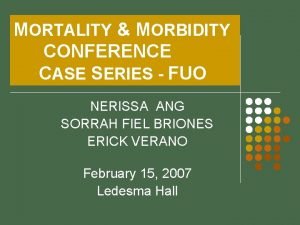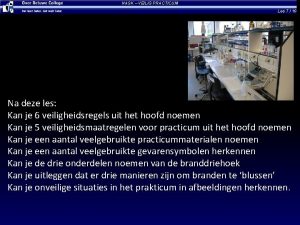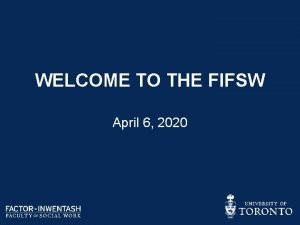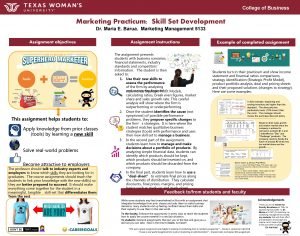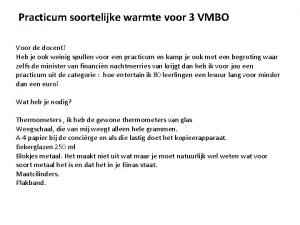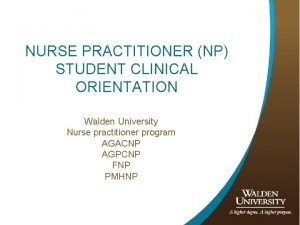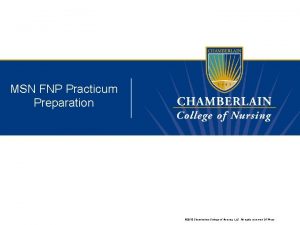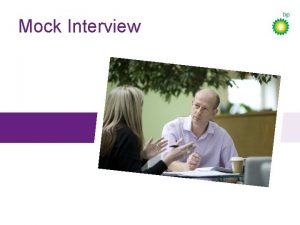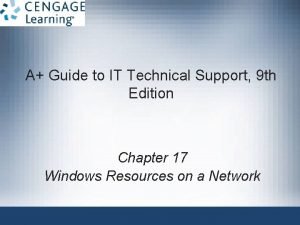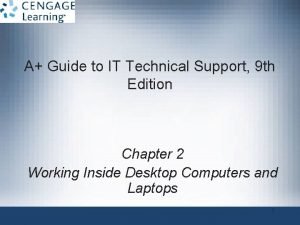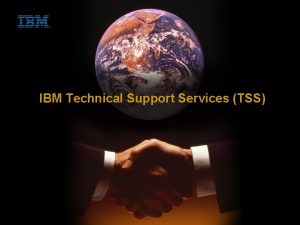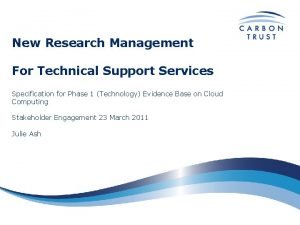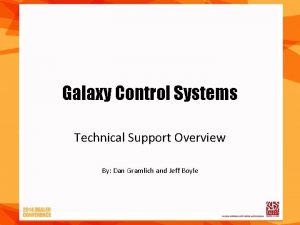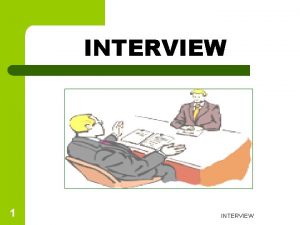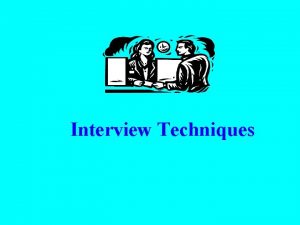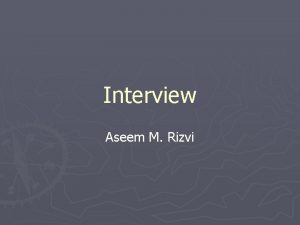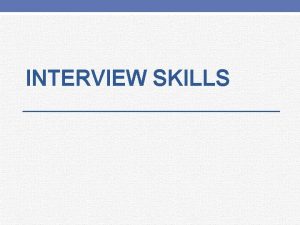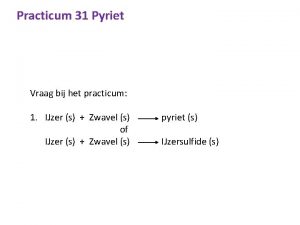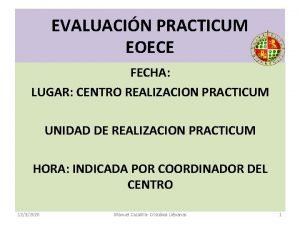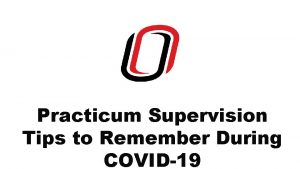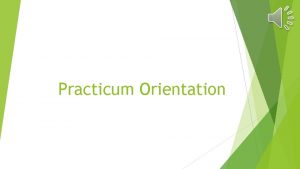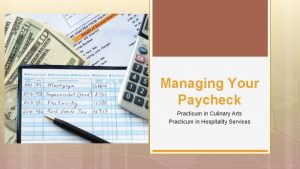Technical Support TS Interview Practicum Nerissa M Heldridge





















- Slides: 21

Technical Support (TS) Interview Practicum Nerissa M. Heldridge Friday: 5/10/2019 May 10, 2019 11: 00 am-11: 30 am PDT: Kate Kawalek May 10, 2019 11: 30 am-12: 00 pm PDT: Kristina Kemp May 10, 2019 12: 00 pm-12: 30 pm PDT: Tina You May 10, 2019 12: 30 pm-1: 15 pm PDT: Kristina Kemp, Nathan Dollinger.

About Nerissa Heldridge Current Role • System Administrator Manager of Foothill Community Health Center in San Jose • Oversees the EMR system used by the practice (e. Clinical. Works) • Analyzes user needs to determine technical requirements • Identifies problems uncovered by testing or customer feedback, and corrects problems or escalates to appropriate personnel Background • Meaningful Use Attestation • UDS/HEDIS Reporting needs • Worked for two New York hospitals • Working on certification in Tableau • BS and MS in Computer Science, BS in Communication Arts • SQL, C++, HL 7 knowledge • Lived in Prague, Melbourne, Manila, Jakarta, Singapore, and Mexico City

Reason I considered the Example 2 Scenario: Software bugs are of many types. A bug is a bug no matter what. But sometimes, it is important to understand the nature, its implications and the cause to process it better. Unfortunately, that's what bugs do when they get to production code When I think of bugs in a software, a few things come to my mind: 1. find the underlying problem. 2. Reason behind a user would report it? 3. Is the bug a show stopper? 4. Is there an alternative solution? 5. Is there a Knowledge Base System I can use to address the bug?

Example 2: Discovery of Bugs 4 Given Scenario: 1. we find out that there’s a major product bug 2. some customers have already reached out with concerns 3. most impacted customers have noticed yet 4. the fix is going to take Engineering at least a few more days

4 Questions 1. How would you let customers know about the bug and the resolution timeline? 2. How would you convey the bug to customers who aren’t aware of it? 3. If a client calls in about the bug, how would you discuss it with them? 4. How would you keep customers informed over the next few days as Engineering fixes the bug?

How would you let customers know about the bug and the resolution timeline? Answer: Don’t make promises you can’t keep ***Promise updates, not timelines: It’s better to say that a feature is on the way and that a customer should ‘Stay tuned!’ rather than say something with a date attached like, ‘Luma Health plan to launch this next month. ’” I believe stating a date creates an expectation and failing to meet it might result in disappointment or dissatisfaction.

How would you let customers know about the bug and the resolution timeline? Answer to be continued: ***Promise investigation, not fixes: I would recommend saying “Let me check with the team and get back to you with more information. ” over “I’ve reported that bug to the team so we can get it fixed up. ” Promising to fix a bug or implement what seems like a basic feature risks frustrating the customer. The “bug” may not be a bug. Or, the seemingly basic feature might turn out to be not feasible to implement.

Communicate ETAs honestly I will let customers know transparently where they are with the feature development – dreaming and discussing, customer research stage, building or testing. Through this, customers can form a rough expectation. Giving exact dates of completion can be an issue if luma health cannot deliver the feature on time. This can happen for a variety of reasons : 1. a change in scope, 2. Change of Focus 3. or project timelines.

How would you let customers know about the bug and the resolution timeline? A few lines that can work with the customer Hi <customer_name>, I'm really sorry to hear about your issues with <insert_product_name>. I've looked into your problem and it seems to be a bug. You're the first person to report this, so thank you! I've added the issue to our to-do list. [Mention some time-frame] Our developer team will start working on this very soon and it will be fixed in the next release, due <insert_expected_timeframe>. [Prove I understand] I understand that in this situation you won't be able to <insert_underlying problem>. (Propose an alternative solution or a workaround). [In this situation, show some humility] I'm sorry to keep you waiting till the next release. Thank you for your patience and understanding!

How would you convey the bug to customers who aren’t aware of it? Answer: Email customers before they email me. Provide updates on feature/patch fix developments When the feature is completed, it’s nice to go back to these customers to let them know that the feature they requested has been implemented. This makes sure they get a chance to use it. Some ways to keep your customers happy and reassured 1) Keep customers informed (email or send a letter) 2) Keep your customers feeling valued 3) Alert your customers about looking in their inbox or messaging 4) Ask your biggest customers for their input on potential products and services

The key to good customer service is trying to understand the customer’s point of view. If I keep customers well informed of all the trouble I am going through to try and address the resolution of a problem, then I build loyalty, and create customer relationships that stick.

3) If a client calls in about the bug, how would you discuss it with them? Answer: Give an honest explanation By putting in the effort to give a genuine explanation can help to build their trust in luma health. It shows that I value them enough to explain how I will discuss the reported bug.

4) How would you keep customers informed over the next few days as Engineering fixes the bug? Answer: 4 ways to keep your customers happy and reassured 1) Keep your customers informed. . 2) Keep your customers feeling valued. . 3) Alert your customers about looking in their inbox. . 4) Ask your biggest customers for their input on potential products and services – it comes down a to good support tool and remembering to keep the customer in the loop at all times.

Nerissa is aware of the following: • Technical Support Representative will provide a wide range of information, from general questions to extensive troubleshooting of luma health’s platform scope of business scope. • Accurate documentation of all calls is required. • Technical Support Representative provides technical/application support in a call center environment to customers using luma health’s sms technology.

Day / Week in the life of Technical Support I New clients ------ meet with the CSM to review new accounts; review tickets & strategize on approach II. Eleven General Consideration: 1. support ticket review; troubleshoot issues, answer requests 2. create Engineering + Product tickets as necessary 3. support ticket review with CSM & engineering 4. meetings with CSM & Sales to discuss new account hand-off information 5. meetings with CSM & Engineering to discuss new account integrations 6. create customer reports (metrics) 7. schedule ongoing staff trainings 8. attend team round-ups 9. collaborative team research 10. complete marketing + sales requests (e. g. customer references) 11. fun projects!

A Typical Day of a Technical Support Representative 8: 00 am Start of Day 8: 00 to 9 am Review and triage new + existing tickets 9: 00 to 10 am Research bugs or issues 10: 00 to 10: 30 am Meet with CSM (discuss client tickets) 10: 30 to 11 am Customer Success team meeting 11 am to 12 pm Meet with Engineering (existing tickets and enhancement requests) 12 pm-1 pm Lunch 1: 00 to 2 pm Meet with Sales (new client planning) 2 -3 pm Review and triage new + existing tickets 3: 00 - 3: 30 pm Customer Success + Engineering meeting (new client planning) 3: 30 -4: 30 pm Address remaining open tickets 4: 30 -5 pm Prepare for rest of the week's calls + meetings

ADDENDUM

• ADDENDUM Example 1 Scenario: You come into the office and find you have 5 active tickets in your queue: -- Ticket 1: customer requests a password reset -- Ticket 2: customer requests to schedule a call to discuss account settings -- Ticket 3: customer is looking for their CSM and can’t get ahold of them -- Ticket 4: customer requests a copy of their agreement and are in month-to -month standing -- Ticket 5: customer says patients are receiving the wrong messages

ADDENDUM Ticket 1 : Hello, I’d like a hand resetting a password for Dr. Smith. Can you help me out? Ticket 2: Hi, I’d like to turn off waitlists. Can you disable this function for me? Ticket 3: It’s been three days and I can’t reach my customer success manager, can you let them know I reached out? I’m having some issues. Ticket 4: Hello, could you send over a copy of our last contract? Ticket 5: Patients keep calling and saying that we’re reminding them of the wrong appointment time. Can you look into why this is happening?

ADDENDUM Answers: 1) Which tickets look like they have the highest risk? Ticket 5 Answer: Ticket 5: Patients keep calling and saying that we’re reminding them of the wrong appointment time. Can you look into why this is happening 2) Talk us through how you would prioritize these and why. Response: I will be proactive: 1. Call to apologize with a remedy to alleviate the situation. 2. Let your client know how long it will take. 3. Give honest time frames and then keep your word. . 4. Update them consistently until the problem is resolved and be automatic about it

ADDENDUM Ticket 1: customer requests a password Ticket 3: It’s been three days and I can’t reach my customer success manager, can you let them know I reached out? I’m having some issues. Response: I will show understanding of the customer issue. I will reach out to the CSM of the customer. I will give an update to the customer as soon as I reached the CSM. I will ask the customer the following: 1) Name of CSM 2) Contact information of the CSM 3) Document the issues the customer is going through
 Msc nerissa current position
Msc nerissa current position Launcelot character sketch
Launcelot character sketch Nerissa ang
Nerissa ang Veiligheidsregels nask
Veiligheidsregels nask Fifsw
Fifsw Marketing practicum
Marketing practicum Indampschaaltje
Indampschaaltje Practicum soortelijke warmte
Practicum soortelijke warmte Hefa 2
Hefa 2 Walden fnp practicum manual
Walden fnp practicum manual Chamberlain practicum handbook
Chamberlain practicum handbook K-vangst vervalvergelijking
K-vangst vervalvergelijking Ethical and legal issues involved in practicum
Ethical and legal issues involved in practicum Cel practicum
Cel practicum Bp technical interview
Bp technical interview A guide to it technical support
A guide to it technical support A guide to it technical support
A guide to it technical support Multilingual technical support
Multilingual technical support Tss ibm
Tss ibm Technical services support cloud computing
Technical services support cloud computing Cisco router technical support
Cisco router technical support Galaxy technical support
Galaxy technical support


